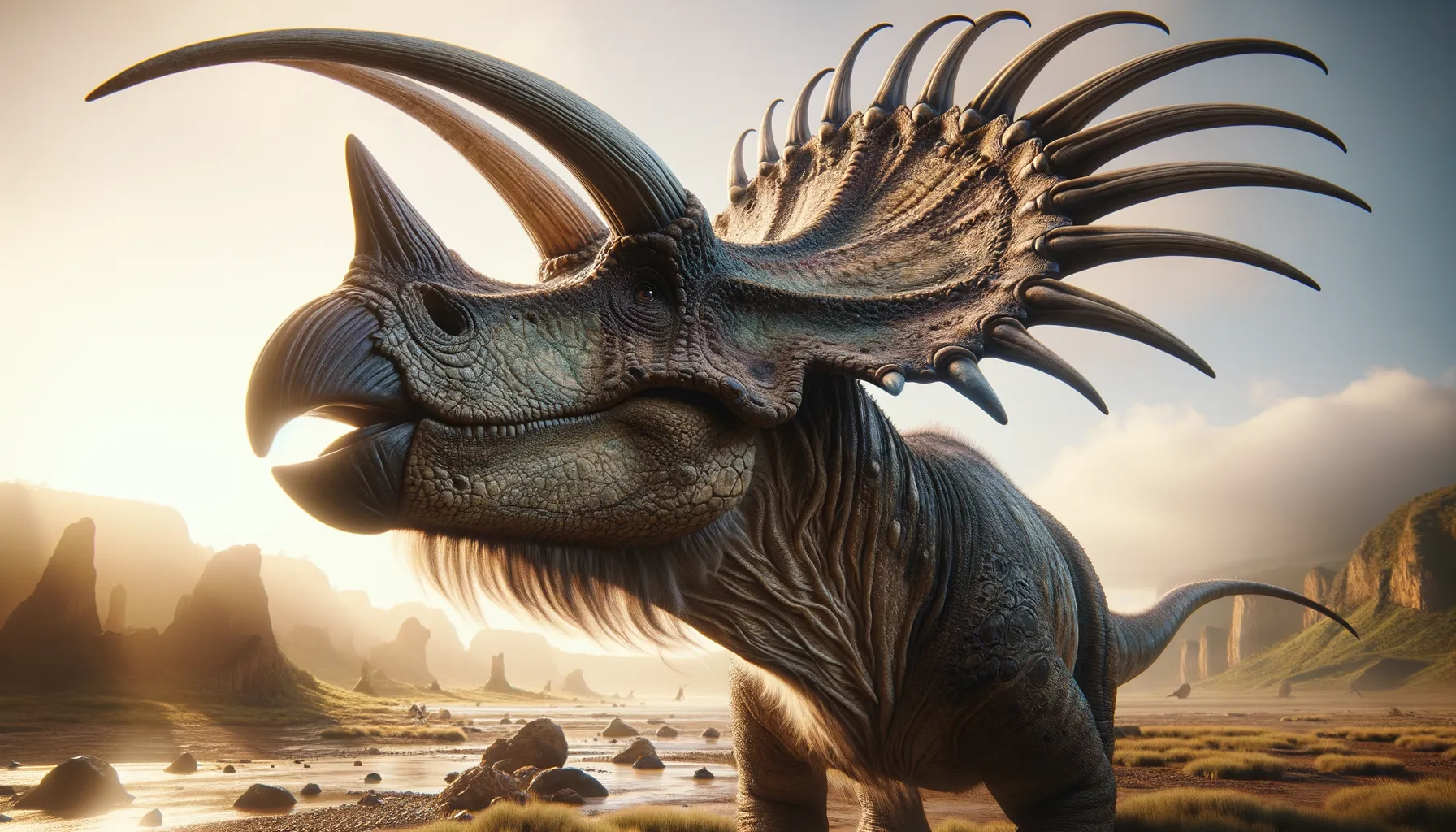
Machairoceratops
Two horns and a frill of distinction!
Period
Cretaceous
Length
Estimated to be about 20 feet long.
Height
Around 6 feet tall at the shoulders.
Weight
Approximately 1.5 to 2 tons.
Machairoceratops was a ceratopsian dinosaur characterized by its prominent horns and frill, similar to the more famous Triceratops. It lived during the Late Cretaceous period in what is now North America. Its unique horn structure and ornate frill made it distinct amongst its relatives. This species is a testament to the incredible diversity of horned dinosaurs that roamed the Earth millions of years ago.
Diet
Machairoceratops was a herbivore, feeding primarily on plants. Its beak was adapted to strip leaves and other vegetation efficiently. It likely grazed on low-lying shrubs and ferns.
Hunting
As a herbivore, Machairoceratops did not hunt for prey. Instead, it focused on foraging for its plant-based diet. Its defensive horns would have discouraged predators.
Environmental challenges
Living in a prehistoric environment, Machairoceratops faced challenges such as predators and competition for food. Climate fluctuations could lead to periods of scarcity, testing its survival strategies. Its social behavior might have helped in navigating these challenges by living in groups.
Speed
Machairoceratops was likely a slow mover.
Lifespan
Estimated to live around 10 to 20 years.
First discovery
Discovered in the Wahweap Formation of Utah in 2016.
Fun Facts
- Machairoceratops was a ceratopsian dinosaur, a group famous for their horned faces like the Triceratops.
- It lived around 77 million years ago during the Late Cretaceous period.
- Its name means 'bent sword horn face', describing the unique curved shape of its horns.
- Machairoceratops was discovered in what is now Utah, USA, in the Kaiparowits Formation.
- This dinosaur was likely herbivorous, feeding on plants and vegetation available in its environment.
- The discovery of Machairoceratops added new insights into the diversity and evolution of horned dinosaurs.
- Its distinctive horn shape suggests it might have used them for display or defense, although the exact purpose is still debated.
Growth and Development
Machairoceratops likely experienced rapid growth in its early years. Young dinosaurs probably grew under the protection of adult herd members. By reaching maturity, its horns would serve as both defense and a display for attracting mates.
Habitat
Machairoceratops resided in lush floodplain environments. These regions provided ample vegetation for its herbivorous diet. Rivers and lakes within the landscape offered hydration and cooling during hot periods.
Interaction with other species
Machairoceratops likely shared its environment with other herbivores and predators. Its social grouping might have included mixed species herds for mutual protection. Predators such as theropods might have posed a constant threat.
Natural lifespan
Machairoceratops had a natural lifespan similar to other large ceratopsians.
Reproduction
Machairoceratops reproduced by laying eggs, likely in a nest. Parental care may have been present, as seen in modern animals with similar reproductive strategies. Multiple hatchlings would increase the survival chances of offspring.
Social behaviour
Machairoceratops likely lived in herds, providing safety in numbers. Social structures may have been complex, like modern-day herd animals. Vocal communication might have played a role in maintaining group cohesion.
Fossil locations
Fossil remains of Machairoceratops were discovered in the Wahweap Formation of southern Utah. The site provides significant insight into Cretaceous ecosystems. Further discoveries could potentially expand its known range.
